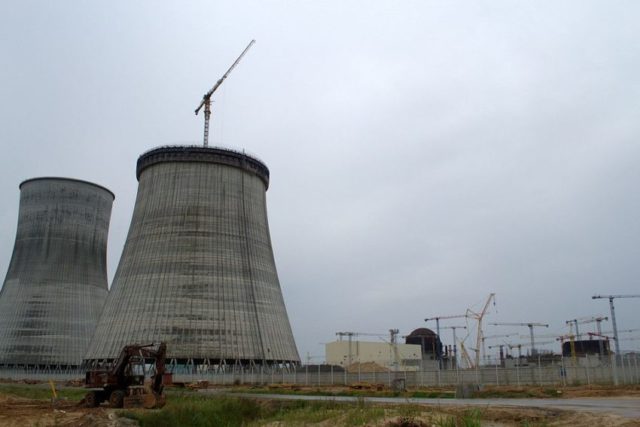A 2.4 GW nuclear power plant in Belarus, built to lessen that nation’s dependence on Russian energy, yet built with Russian input and finance, is due to be operational later this year.

Ostrovets Unit 1 is expected to be completed this year, generating near 1,200 MW capacity with its VVER Generation 3 pressurized water reactor. The nearly identical Ostrovets 2 is planned to be completed by next year.
Mikhail Chudakov, deputy director general and head of the International Atomic Energy Agency Department of Nuclear Energy, visited the site in eastern Europe earlier this month and said the IAEA had no technical complaints against the plant, according to a story on the Belarusian NPP website.
“Belarus fulfills all the requirements of the IAEA and invites all inspections,” Chudakov said, according to the Belarussian NPP website report. “It is an exemplary country. Not every country invites all IAEA inspections.”
Siemens and KSB are among the suppliers for the Ostrovets power units.
The original plans for Ostrovets date back to the 1980s, but they were scuttled due to the Chernobyl nuclear disaster. It was revived in the early 2010s as a means of reducing dependence on Russia.
At the same time, Russia is a primary financial and logistical partner in the Ostrovets project. Atomstroyexport is the reactor supplier and is a fully owned subsidiary of state-owned Russian energy firm Rosatom.
The IAEA has given its go-ahead, but some have raised alarms over potential safety concerns for the Belarusian nuclear plant. GlobalData quoted energy and nuclear policy analyst Mycle Schneider as warning “Neighboring countries have voiced concern over the lack of review of some serious safety concerns, and Lithuania has transmitted an official note to the European Council.”
Ukraine also has publicized complaints over the project.
The Belarusian government has touted the carbon-free impacts of Ostrovets’ future power generation, noting the reduction in greenhouse gas emissions will help meet Paris accord guidelines. They pointed out that the international commission visit underlined the open and safe aspects of the work going on at Ostrovets.
“Belarus demonstrated its transparency and genuine interest to receive an objective professional assessment of the readiness of its nuclear power infrastructure for the commissioning of the country’s first nuclear power plant,” Belarus deputy energy minister Mikhail Mikhadvuk said in a statement.
Nuclear energy projects certainly went on hold in recent decades after events such as Three Mile Island, Chernobyl and Fukushima. Yet new construction projects are progressing toward commissioning and operational goals.
Southern Co.’s Georgia Power is leading the work on the Vogtle Units 3 and 4 expansion in that state. Unit 1 of the $25bn project is expected to be operational next year, with Unit 2 coming online a year later.
Meanwhile, in Abu Dhabi the Nawah Energy Co. has started loading fuel assemblies into Unit 1 of the Barakah Nuclear Power Plant in that Middle Eastern nation. Once all four units are operational, Barakah is expected to provide 25 per cent of the nation’s electricity needs and avoid more than 20 million metric tonnes of carbon dioxide emissions annually, according to reports.